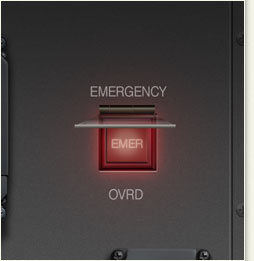A differentiating strength of Rockwell Collins' balanced business model is our proven ability to migrate promising new technologies across markets and businesses. Sharing core intellectual capital across our commercial and government segments allows us to maximize the return on our research and development investments — and consistently exceed customer expectations.
Working together — without boundaries
Rockwell Collins' culture of "working together" allows the talent of our employees to be readily shared across commercial and government domains, and across markets within each segment. For example, the engineering and development work to provide flight deck technology on the Boeing 787 Dreamliner — the most Rockwell Collins content ever on a commercial aircraft — was instrumental in our selection as the primary avionics system provider for Boeing's upcoming KC-46 tanker for the U.S. Air Force. The two platforms share closely related Rockwell Collins technology, including the flight decks' large-format, integrated Liquid Crystal Display systems. Leveraging our flight deck technology across commercial and government businesses allowed us to efficiently and effectively meet customer needs while resulting in significant and sustainable returns for our company for many years to come.
Aircraft engineers have long sought mechanisms that can preserve safe flight in instances of aircraft damage or other emergencies. For military applications, Rockwell Collins engineers developed highly intelligent systems that enable unmanned aerial vehicles to recover from damage and complete a safe landing. These capabilities, known as autonomous backup controls, are now migrating into commercial applications as a component of our Pro Line Fusion integrated avionics system. If a pilot identifies a loss of situational awareness, one touch of a button can provide extra time to recover by putting the aircraft into a safe holding pattern. The system also recognizes loss of engine power and automatically provides on-screen guidance cues to reach the nearest airport. With Rockwell Collins' autonomous backup controls, pilots now benefit from the latest in enhanced flight safety technology.
Guiding the next generation of airspace solutions
A rapidly increasing volume of worldwide air traffic, along with the anticipated entry of unmanned aircraft into the civilian airspace, is driving the aerospace industry to fundamentally rethink air travel in the 21st century. Rockwell Collins is taking a leading role in advancing the concepts, standards and technologies necessary to provide future generations with more efficient, safer and more environmentally responsible air travel.
In the United States and Europe, respectively, the NextGen and SESAR programs are under way to make possible a new era of air traffic management. Government and industry — including Rockwell Collins leaders — are working in concert to develop a reliable system to manage a truly integrated airspace that encompasses both manned and unmanned civil, business, commercial and military aircraft. From the building blocks of this system — including transponders that send and receive precise GPS coordinates of all airborne aircraft as well as weather and data communications — to higher-level thinking about the architecture of the operation itself, Rockwell Collins engineers are playing a critical role in advancing the technologies and strategies necessary to advance the next generation of global airspace.






